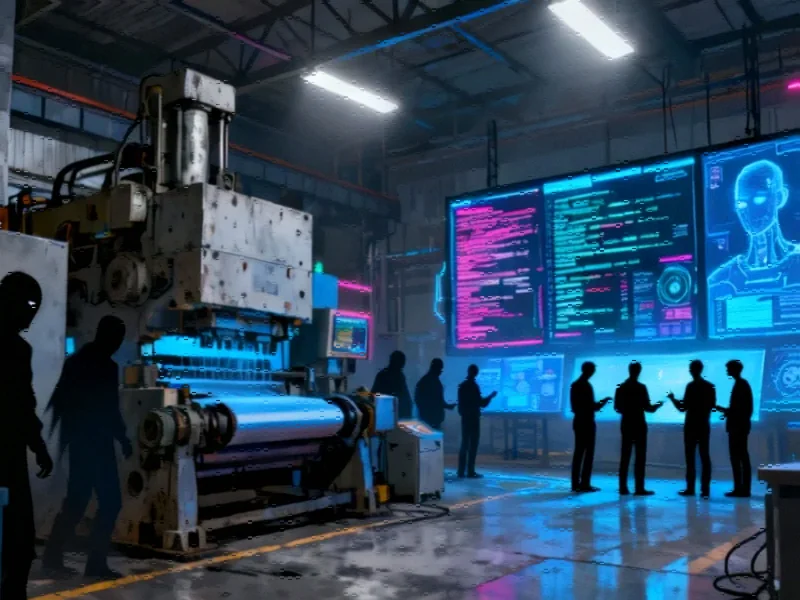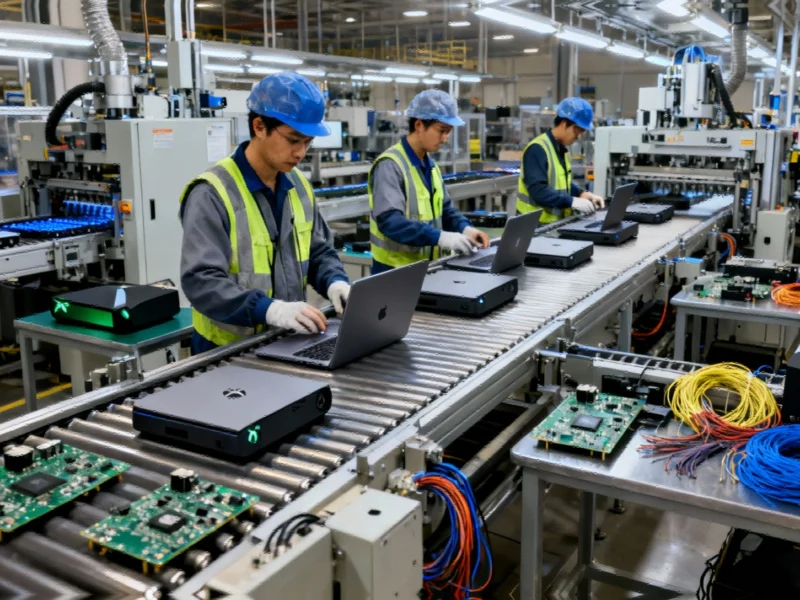Manufacturing’s Digital Transformation Dilemma
Mid-market manufacturers are navigating a complex technological landscape where digital transformation has become essential for survival, yet internal resources often fall short of meeting escalating demands. According to reports, companies are increasingly turning to external information technology expertise to bridge critical gaps in their modernization efforts. This strategic shift comes as manufacturers face what analysts suggest is a perfect storm of challenges: tightening budgets, scarce technical talent, and increasingly sophisticated cyber threats.
The Hidden Infrastructure Crisis
Behind the innovation-focused conversations in manufacturing circles, sources indicate a quiet crisis is unfolding. Many companies continue to operate decades-old systems supplemented by manual processes and extensive Microsoft Excel spreadsheets. The report states that small IT teams, often consisting of just one or two people supporting entire operations, struggle merely to maintain basic functionality while strategic initiatives languish.
Meanwhile, security threats continue to escalate. Manufacturing has reportedly become the most targeted industry for ransomware attacks, with IBM’s 2024 Cost of a Data Breach Report indicating each breach costs an average of $4.47 million. This growing threat landscape puts entire operations at risk, particularly for companies relying on outdated infrastructure.
The AI Implementation Gap
While enthusiasm for artificial intelligence runs high across the manufacturing sector, execution remains a significant challenge. According to Columbus Global research cited in the report, 82% of manufacturing IT leaders are prioritizing AI initiatives in 2025, yet most projects reportedly fail to deliver meaningful ROI. Analysts suggest this disconnect stems from companies being “attitude ready” but not “organizationally ready” for advanced technologies.
The report states that a common pattern emerges when leadership mandates AI adoption without clear use cases or roadmaps. Overwhelmed IT teams then attempt to integrate new tools into outdated systems without proper data foundations, leading to costly delays and failed pilot programs. This challenge is particularly acute given recent technology advancements that require sophisticated infrastructure.
Strategic Partnership Advantages
External IT partners are reportedly becoming indispensable to manufacturing leaders seeking to overcome these challenges. Rather than spending years building internal capacity, companies are bringing in specialists with domain expertise and proven frameworks. These partnerships provide strategic support in several critical areas according to the analysis:
- Data unification: Integrating fragmented systems and improving data quality
- Infrastructure development: Building scalable cloud-based platforms
- AI roadmap creation: Developing realistic, value-driven implementation plans
- Change management: Guiding organizational adoption and skills development
Crucially, external partners help manufacturers avoid what the report describes as the “AI vanity trap,” where flashy tools are implemented without solving genuine business problems. With proper guidance, AI reportedly becomes a driver of efficiency and measurable growth rather than just another technology expense.
Recognizing the Need for External Support
Sources indicate several clear signs that signal when manufacturers should consider bringing in external expertise. These include growing IT backlogs where critical projects face repeated delays, systems that cannot communicate effectively with each other, and leadership pushing for transformation without concrete plans. According to Deloitte research referenced in the report, only 16% of board members feel confident in their company’s pace of AI adoption, creating pressure that often trickles down to unprepared IT teams.
The analysis suggests that external partnerships can simultaneously address integration challenges, security vulnerabilities, and change management hurdles. This comprehensive approach becomes increasingly valuable as companies navigate complex industry developments and evolving market demands.
Future-Proofing Manufacturing Operations
What reportedly sets leading manufacturers apart in 2025 is how effectively they align IT investments with business objectives and leverage partnerships to fill capability gaps. As companies face continued pressure from global competition and rapid technological change, strategic technology partnerships are becoming essential components of sustainable operations. These collaborations enable manufacturers to leverage emerging innovations while maintaining focus on their core competencies.
The manufacturing sector continues to evolve amid broader market trends and technological advancements. Companies that successfully integrate external expertise into their operations are reportedly better positioned to adapt to changing conditions and capitalize on new opportunities in an increasingly digital landscape. This approach becomes particularly relevant given related innovations that are transforming production processes across multiple industries.
As the analysis concludes, in an environment where budgets remain constrained and specialized talent is scarce, external IT expertise has transitioned from luxury to strategic necessity. Manufacturers embracing this approach are reportedly building resilient operations capable of withstanding evolving cyber threats while positioning themselves for sustainable growth amid ongoing digital transformation. This strategic alignment becomes increasingly critical as companies navigate complex global market trends and technological disruptions.
This article aggregates information from publicly available sources. All trademarks and copyrights belong to their respective owners.
Note: Featured image is for illustrative purposes only and does not represent any specific product, service, or entity mentioned in this article.



